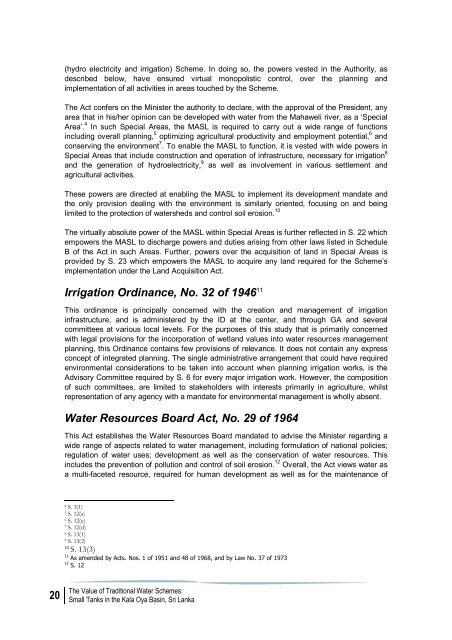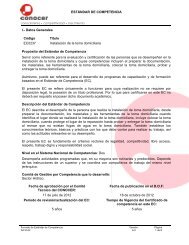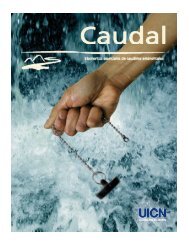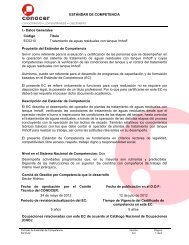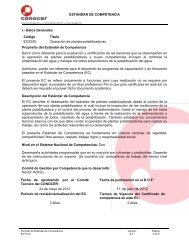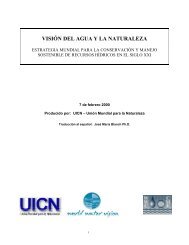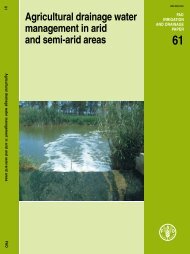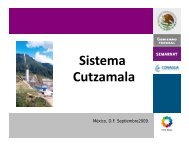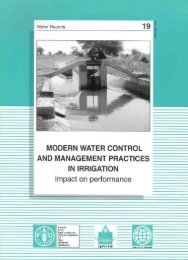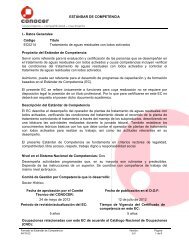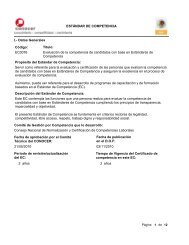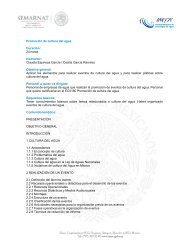Document - IUCN
Document - IUCN
Document - IUCN
You also want an ePaper? Increase the reach of your titles
YUMPU automatically turns print PDFs into web optimized ePapers that Google loves.
(hydro electricity and irrigation) Scheme. In doing so, the powers vested in the Authority, asdescribed below, have ensured virtual monopolistic control, over the planning andimplementation of all activities in areas touched by the Scheme.The Act confers on the Minister the authority to declare, with the approval of the President, anyarea that in his/her opinion can be developed with water from the Mahaweli river, as a ‘SpecialArea’. 4 In such Special Areas, the MASL is required to carry out a wide range of functionsincluding overall planning, 5 optimizing agricultural productivity and employment potential, 6 andconserving the environment 7 . To enable the MASL to function, it is vested with wide powers inSpecial Areas that include construction and operation of infrastructure, necessary for irrigation 8and the generation of hydroelectricity, 9 as well as involvement in various settlement andagricultural activities.These powers are directed at enabling the MASL to implement its development mandate andthe only provision dealing with the environment is similarly oriented, focusing on and beinglimited to the protection of watersheds and control soil erosion. 10The virtually absolute power of the MASL within Special Areas is further reflected in S. 22 whichempowers the MASL to discharge powers and duties arising from other laws listed in ScheduleB of the Act in such Areas. Further, powers over the acquisition of land in Special Areas isprovided by S. 23 which empowers the MASL to acquire any land required for the Scheme’simplementation under the Land Acquisition Act.Irrigation Ordinance, No. 32 of 1946 11This ordinance is principally concerned with the creation and management of irrigationinfrastructure, and is administered by the ID at the center, and through GA and severalcommittees at various local levels. For the purposes of this study that is primarily concernedwith legal provisions for the incorporation of wetland values into water resources managementplanning, this Ordinance contains few provisions of relevance. It does not contain any expressconcept of integrated planning. The single administrative arrangement that could have requiredenvironmental considerations to be taken into account when planning irrigation works, is theAdvisory Committee required by S. 6 for every major irrigation work. However, the compositionof such committees, are limited to stakeholders with interests primarily in agriculture, whilstrepresentation of any agency with a mandate for environmental management is wholly absent.Water Resources Board Act, No. 29 of 1964This Act establishes the Water Resources Board mandated to advise the Minister regarding awide range of aspects related to water management, including formulation of national policies;regulation of water uses; development as well as the conservation of water resources. Thisincludes the prevention of pollution and control of soil erosion. 12 Overall, the Act views water asa multi-faceted resource, required for human development as well as for the maintenance of4 S. 3(1)5 S. 12(a)6 S. 12(c)7 S. 12(d)8 S. 13(1)9 S. 13(2)10S. 13(3)11 As amended by Acts. Nos. 1 of 1951 and 48 of 1968, and by Law No. 37 of 197312 S. 1220The Value of Traditional Water Schemes:Small Tanks in the Kala Oya Basin, Sri Lanka


